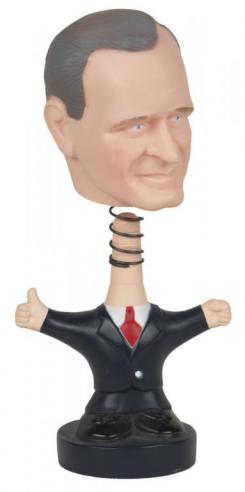Elections from 1968 to 2016
This section contains information and memorabilia on the elections from 1968 to 2016. Scroll down the page to learn more about specific election years.
Election of 1968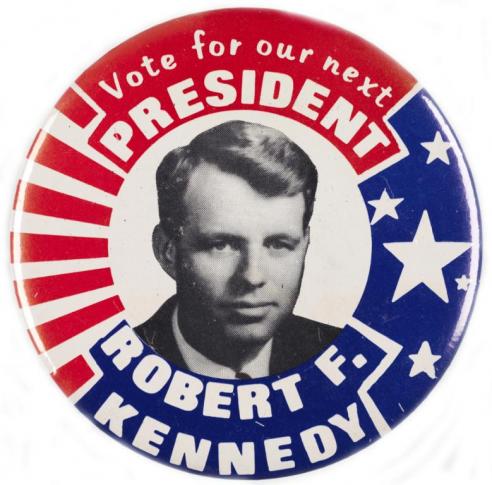
President Lyndon Johnson’s “mandate for unity” had disappeared as the 1968 election approached. Protest demonstrations over the unpopular Viet Nam War, race riots (including those that followed the assassination of the Rev. Dr. Martin Luther King, Jr.), escalating crime rates, and high taxes to pay for “Great Society” programs had severely damaged the Johnson administration’s popularity. Johnson initially sought another term but was nearly defeated in an early primary contest by Senator Eugene McCarthy, who ran as a “dove” (antiwar) candidate. Subsequently, Johnson appeared on television to announce that he would not seek reelection. Senator Robert Kennedy and Vice President Hubert Humphrey also entered the race for the Democratic Party nomination. Tragically, following a primary victory in California, Kennedy was assassinated. At the Democratic convention—which was marred by violent, nationally televised, anti-war protest demonstrations and police confrontations—Hubert Humphrey secured the nomination with Edmund Muskie selected as his running mate. Reviving his image after losing the California gubernatorial and presidential elections, Richard Nixon was nominated at the Republican convention. His vice presidential running mate was the relatively unknown governor of Maryland, Spiro Agnew.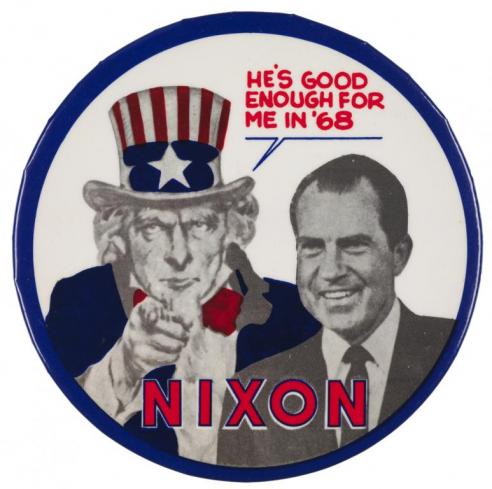
The Republican platform promised to end the war, restore law and order, and lower taxes. The Nixon campaign primarily used television to reach the voter. As an Independent candidate, Governor George Wallace of Alabama ran on a platform to restore law and order, oppose school busing, and end the war. Ahead in the polls, Nixon refused to debate Humphrey, who finally tried to distance himself from the unpopular Johnson administration by offering to stop bombing and end the war. President Johnson’s suspension of bombing just before the election appeared to help Humphrey gain in the polls. The election results were close with Nixon getting 301 electoral votes (and 43 percent of the popular vote) to 191 for Humphrey and 46 for Wallace. Virginia cast its 12 electoral votes for Richard Nixon.
Election of 1972
A combination of party reforms and unforeseen events led to the Democratic nomination of relatively unknown senator George McGovern for president. McGovern campaigned actively in the primaries and received the majority of the delegates when several of 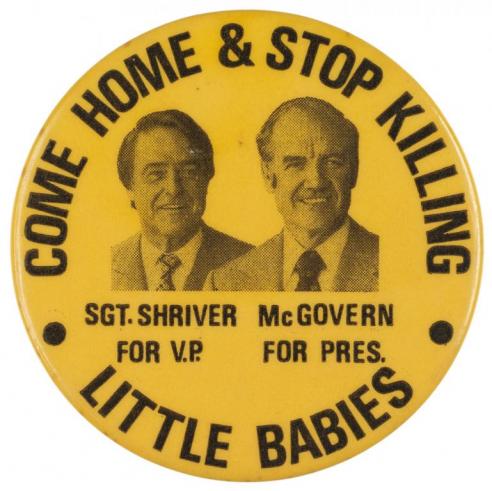 the leading contenders were forced to quit the race: Senator Edward Kennedy had a car accident involving a young woman’s death, Senator Edmund Muskie had an emotional breakdown on television, and Governor George Wallace was paralyzed in an assassination attempt. At the convention, the liberal McGovern supporters approved a platform calling for immediate withdrawal from Viet Nam, amnesty for draft dodgers, school busing, increased welfare spending, banning handguns, abolishing capital punishment, and the right of Americans to choose their own lifestyles and private habits without prosecution. Senator Thomas Eagleton of Missouri was nominated for vice president. Shortly after, it was discovered that Eagleton had received electric shock treatment for depression in the past. Subsequent pressure from Democratic Party leaders forced McGovern to ask for Eagleton’s resignation, and Sargent Shriver, former director of the Peace Corps, was selected as a replacement.
the leading contenders were forced to quit the race: Senator Edward Kennedy had a car accident involving a young woman’s death, Senator Edmund Muskie had an emotional breakdown on television, and Governor George Wallace was paralyzed in an assassination attempt. At the convention, the liberal McGovern supporters approved a platform calling for immediate withdrawal from Viet Nam, amnesty for draft dodgers, school busing, increased welfare spending, banning handguns, abolishing capital punishment, and the right of Americans to choose their own lifestyles and private habits without prosecution. Senator Thomas Eagleton of Missouri was nominated for vice president. Shortly after, it was discovered that Eagleton had received electric shock treatment for depression in the past. Subsequent pressure from Democratic Party leaders forced McGovern to ask for Eagleton’s resignation, and Sargent Shriver, former director of the Peace Corps, was selected as a replacement. 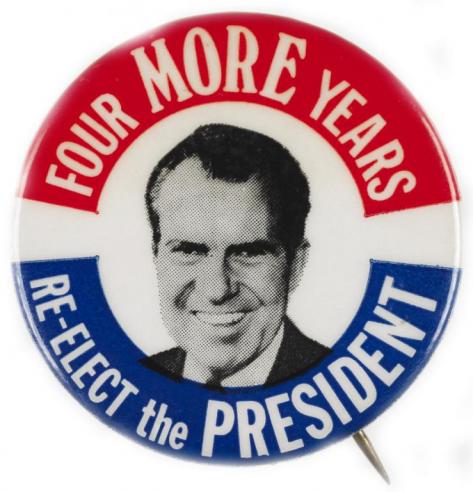
Denouncing the Democratic platform as radical, the Republicans again nominated Richard Nixon and Spiro Agnew. The campaign strategy was for Nixon to appear presidential. To help ensure victory, an independent Committee to Re-Elect the President (nicknamed CREEP) was set up to raise money. During the campaign, however, five employees of the committee were caught attempting to bug Democratic headquarters at the Watergate hotel. Dismissed as a “third rate burglary,” this did not affect the election. Nixon won in a landslide, losing only in Massachusetts and the District of Columbia, with 520 electoral votes to 17 for McGovern. Virginia cast 11 of its electoral votes for Richard Nixon and 1 for John Hospers of the newly formed Libertarian Party.
Election of 1976
In December of 1973, following the resignation of Vice President Spiro Agnew, President Richard Nixon picked House Republican leader Gerald Ford to be vice president. Eight months later, Nixon’s involvement in the Watergate scandal forced him to resign; consequently, Ford became president. One of Ford’s first official acts was to fully pardon the 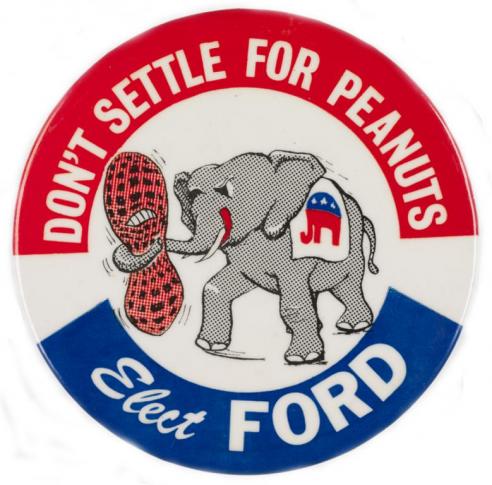 ex-president for any crimes that might have occurred during the Nixon administration. Although Ford had the reputation of honesty and integrity, public outcry over this act damaged the public’s approval of the new president. Among the possible candidates for the Republican nomination in 1976 was former actor and California governor, Ronald Reagan. Despite a close race in the primaries, Gerald Ford was nominated at the Republican convention. Early choices for the Democratic nomination included Hubert Humphrey, Senators Henry Jackson and Birch Bayh, and Gov. George Wallace. However, little known peanut farmer and former Georgia governor Jimmy Carter had begun a campaign as a Washington outsider in 1974 with a pledge that “I will not lie to you.” Success in the early primaries led to Carter’s increasing popularity, and the resultant momentum allowed him to win enough primary votes to secure the nomination.
ex-president for any crimes that might have occurred during the Nixon administration. Although Ford had the reputation of honesty and integrity, public outcry over this act damaged the public’s approval of the new president. Among the possible candidates for the Republican nomination in 1976 was former actor and California governor, Ronald Reagan. Despite a close race in the primaries, Gerald Ford was nominated at the Republican convention. Early choices for the Democratic nomination included Hubert Humphrey, Senators Henry Jackson and Birch Bayh, and Gov. George Wallace. However, little known peanut farmer and former Georgia governor Jimmy Carter had begun a campaign as a Washington outsider in 1974 with a pledge that “I will not lie to you.” Success in the early primaries led to Carter’s increasing popularity, and the resultant momentum allowed him to win enough primary votes to secure the nomination.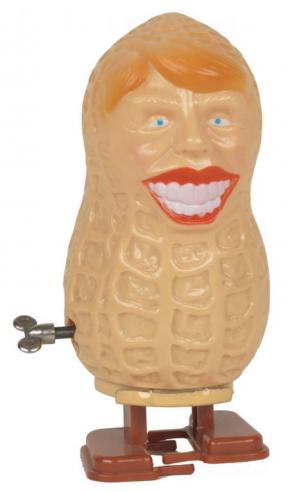
Carter enjoyed a large lead over Ford in the polls as the campaigns began. Yet, both candidates made errors that damaged their image. Carter offended many people by admitting in a Playboy magazine article that he had “committed adultery in [his] heart.” A series of three televised debates played a key role in the race. Forgetting about Poland, Ford claimed in one of the debates that there was “no Soviet domination in eastern Europe.” Opponents seized on this blunder, and it alienated voters of eastern European ethnicity.
The election results were close, with Carter receiving 297 electoral votes to 240 for Ford. Although Gerald Ford won more states than Carter (27 to 23), Democrats regained the support of all the southern states (except Virginia) that had previously voted for Nixon. More than 95 percent of the black vote went to Carter, enabling him to win such large states as New York and Pennsylvania. Virginia cast its 12 electoral votes for Gerald Ford.
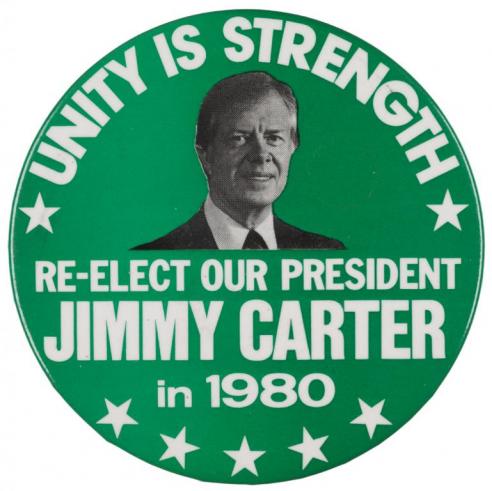 Election of 1980
Election of 1980
As the 1980 election year approached, the Carter administration was troubled by problems of inflation and high unemployment, the Iranian seizure of American hostages, and the Russian invasion of Afghanistan. Nonetheless, despite a challenge from Senator Edward Kennedy, Democrats decided to stick with Jimmy Carter, who was easily nominated to run for a second term. Claiming that “government is not a solution to our problems, government is the problem,” former actor and California governor Ronald Reagan emphasized a new, conservative political philosophy. Reagan won the majority of the Republican primaries, defeating more moderate candidates, George H. W. Bush and Robert Dole, as 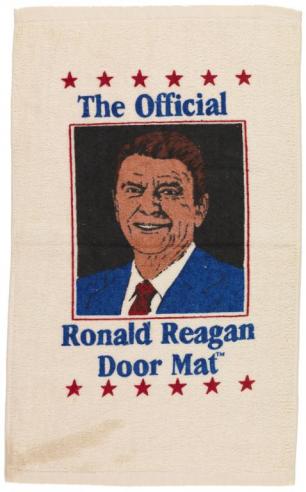 well as a liberal, John Anderson. Unhappy with the conservative viewpoint, Anderson then decided to run as a third-party candidate on the National Unity ticket.
well as a liberal, John Anderson. Unhappy with the conservative viewpoint, Anderson then decided to run as a third-party candidate on the National Unity ticket.
In a nationally televised debate, Reagan attacked Carter’s economic problems by asking, “Are you better off now than you were four years ago?” The former actor’s communication skills gave him a decided advantage as he promoted his agenda of renewed patriotism, restoring family values, and stimulating the economy with tax cuts. The election, in which the voters displayed their dissatisfaction with Carter’s handling of the economy and his inability to resolve the Iranian hostage crisis, resulted in a decisive victory for Ronald Reagan, who received 489 electoral votes (50.7 percent of the popular vote) to 49 (41 percent) for Carter. Anderson received 6 percent of the popular vote but no electoral votes. Virginia cast its 12 electoral votes for Ronald Reagan.
Election of 1984
Following a recession during the middle of the president’s first term, improving economic conditions with lower unemployment and inflation combined with the popular appeal of his patriotic view of America made Ronald Reagan an overwhelming favorite for reelection in 1984. Several 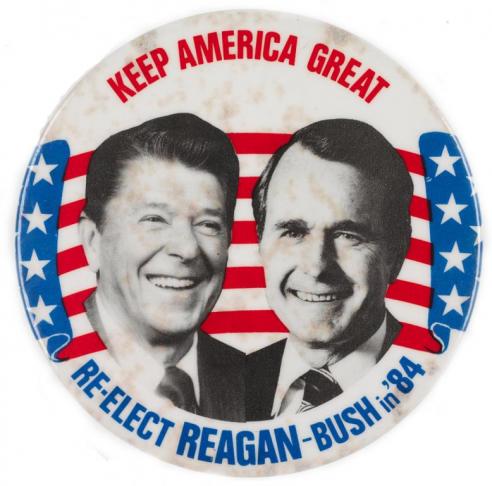 candidates entered the Democratic primaries. Former vice president Walter Mondale eventually secured the nomination over Senator Gary Hart of Colorado and civil rights leader Jesse Jackson. At the convention, Mondale made history by selecting Congresswoman Geraldine Ferraro of New York as the first woman to be nominated for vice president of a major party.
candidates entered the Democratic primaries. Former vice president Walter Mondale eventually secured the nomination over Senator Gary Hart of Colorado and civil rights leader Jesse Jackson. At the convention, Mondale made history by selecting Congresswoman Geraldine Ferraro of New York as the first woman to be nominated for vice president of a major party.
With support from many labor organizations and unions, Mondale promised to raise taxes on wealthier individuals and corporations to combat large federal deficits. During the campaign, when Reagan faltered and stumbled over his words in a televised debate, speculation arose that his age would be a factor in his reelection. Reagan’s skills as “The Great Communicator,” however, returned in the second debate when he replied to a question about his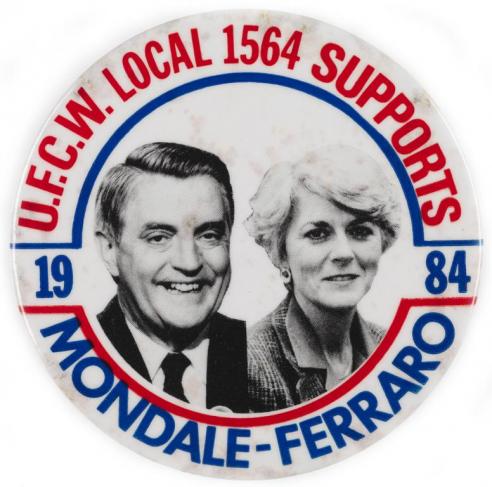 age, saying “I will not make age an issue of this campaign. I am not going to exploit for political purposes, my opponent's youth and inexperience.”
age, saying “I will not make age an issue of this campaign. I am not going to exploit for political purposes, my opponent's youth and inexperience.”
The election result was a landslide victory for Reagan, who received 59 percent of the popular vote. The Electoral College vote was 525 for Reagan (who won 49 of the 50 states) to 13 for Mondale (who won in his home state of Minnesota and the District of Columbia). Despite Geraldine Ferraro’s selection as Mondale’s running mate, 55 percent of women who voted in the election did so for Reagan. Virginia cast its 12 electoral votes for Ronald Reagan.
Election of 1988
Emphasizing the success of the prior administration, George H.W. Bush vowed “to continue the Reagan revolution.” Bush had been a Congressman, ambassador to the United Nations, envoy to China, CIA Director, and Ronald Reagan’s vice president. Despite an early primary loss to Senator Robert Dole, Bush easily went on to secure the Republican nomination. He then stunned the convention by picking relatively unknown Indiana junior senator Dan Quayle as his running mate. In his acceptance speech, Bush promised “a kinder and gentler nation” and emphatically vowed, “Read my lips: no new taxes.” At the outset, there were multiple contenders for the Democratic nomination. Yet, newspaper details of adultery forced early leader Senator Gary Hart to drop out, and controversy over possible plagiarism caused Senator Joseph Biden to withdraw. The nomination went to Massachusetts governor Michael Dukakis, who was relatively unknown nationally but had achieved economic success in his home state.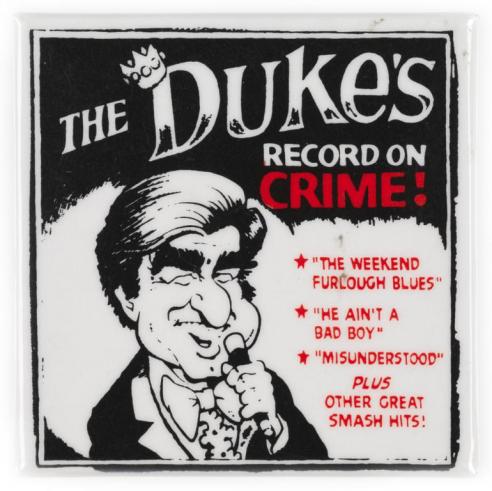
The Bush campaign was well planned with television commercials, news events, and photo opportunities. Neither campaign, however, appeared to focus on key issues. Rather, political consultants used polls, television imagery, sound bites, and carefully controlled candidate appearances to influence the voter. In the election itself, Dukakis won the black vote and traditional Democratic cities, while Bush received 53.4 percent of the popular vote and 426 electoral votes to Dukakis’s 111. George H. W. Bush became the first sitting vice president since Martin Van Buren to assume the presidency. Virginia cast its 12 electoral votes for George H. W. Bush.
Election of 1992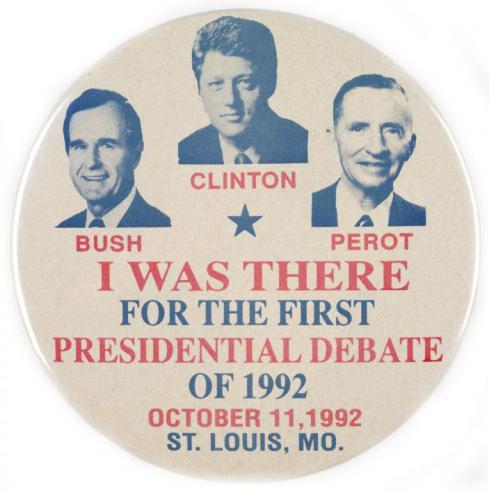
Foreign policy success and an easy victory in the Persian Gulf War had given President George H. W. Bush an unbelievable 90 percent approval rating in early 1991 opinion polls. Conversely, by the middle of 1991, rising unemployment and an economic recession had lowered his rating to 29 percent. Despite this and conservative Republican discontent that Bush had reneged on his 1988 “no new taxes” pledge by agreeing with Democrats on a deficit reduction bill, the president was nominated for a second term without difficulty. The president’s popularity in early 1991 had caused more prominent, potential Democratic candidates to skip the 1992 race. Instead, the Democrats looked to William “Bill” Clinton, a relatively unknown Arkansas governor. Clinton initially had to overcome issues of infidelity and pot smoking. Yet, his appeal as a moderate Democrat who would end welfare and stabilize the economy overcame the character issues and secured his nomination.
For the first time, radio and television “talk shows” played a significant role in the election campaigns. Candidates appeared regularly on various programs for interviews. These shows offered a free opportunity to reach out directly to the voter. Clinton appealed to the younger voters, appearing on MTV and playing the saxophone on late night 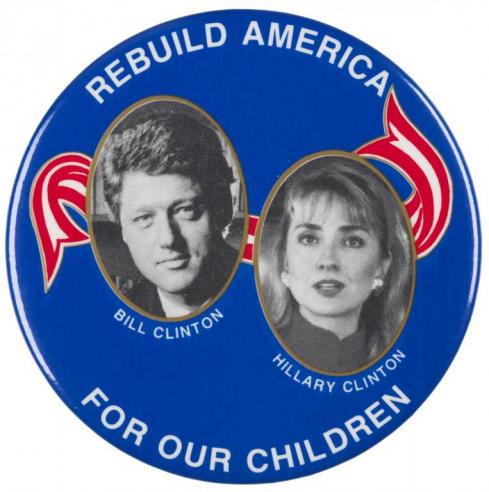 comedy shows. However, the primary focus of the Democratic campaign was emphasized by a sign at their headquarters posted by strategist James Carville that read “It’s the economy, stupid!” The economy was also the central theme of independent candidate, Texas billionaire, Ross Perot, who financed his own campaign. Promising to end the deficit, he paid for his own television “infomercials,” which explained the issues and his positions to the viewers. His message appealed to millions of voters who desired change. In contrast, the Bush campaign appeared to lack direction; there was no clear-cut theme. Republicans tried to attack Clinton on moral issues and emphasized “family values.” Perhaps sensing that the economy was already correcting itself, Bush concentrated instead on foreign policy success. His campaign appeared to lack energy.
comedy shows. However, the primary focus of the Democratic campaign was emphasized by a sign at their headquarters posted by strategist James Carville that read “It’s the economy, stupid!” The economy was also the central theme of independent candidate, Texas billionaire, Ross Perot, who financed his own campaign. Promising to end the deficit, he paid for his own television “infomercials,” which explained the issues and his positions to the viewers. His message appealed to millions of voters who desired change. In contrast, the Bush campaign appeared to lack direction; there was no clear-cut theme. Republicans tried to attack Clinton on moral issues and emphasized “family values.” Perhaps sensing that the economy was already correcting itself, Bush concentrated instead on foreign policy success. His campaign appeared to lack energy.
The final election results gave Clinton 370 electoral votes to 168 for Bush; Perot received none. Clinton won 43 percent of the popular vote to 38 percent for Bush and 19 percent for Perot. Virginia cast its 13 electoral votes for George H. W. Bush.
Election of 1996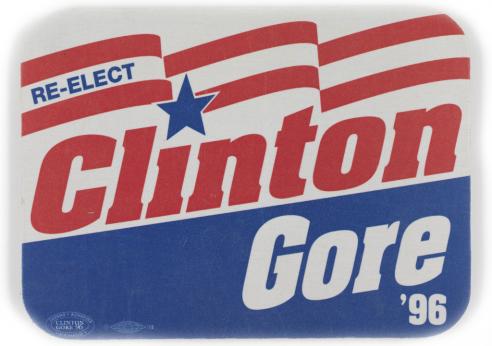
President William “Bill” Clinton began his term with a more liberal agenda that emphasized health care reform and increased taxes. Nevertheless, Republican victories in the midterm congressional elections led him to adopt a moderate, centrist political position in response. With a booming economy and low unemployment, Clinton was easily nominated to run for a second term. A large number of candidates initially sought the Republican nomination. Senate majority leader and World War II hero Robert Dole secured the nomination by winning the majority of the state primaries. Ross Perot was put forward by his own U.S. Reform Party but was considered only a minor candidate in the 1996 election and was not permitted to participate in the presidential debates.
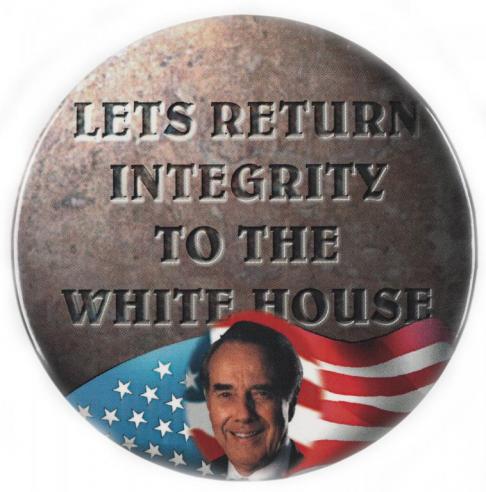 Because Clinton now adopted a moderate agenda, Dole did not significantly differ from him on many issues. In fact, Dole had difficulty identifying his own specific vision for the future. Rather, Republicans emphasized Dole’s impressive war record while suggesting that Clinton had dodged the draft. They promoted “family values” while noting Clinton’s questionable financial dealings and suspected marital infidelity. Democrats portrayed Dole as old (at 73) and out of touch with mainstream America, contrary to their energetic candidate. They suggested that Dole would block or eliminate many social programs.
Because Clinton now adopted a moderate agenda, Dole did not significantly differ from him on many issues. In fact, Dole had difficulty identifying his own specific vision for the future. Rather, Republicans emphasized Dole’s impressive war record while suggesting that Clinton had dodged the draft. They promoted “family values” while noting Clinton’s questionable financial dealings and suspected marital infidelity. Democrats portrayed Dole as old (at 73) and out of touch with mainstream America, contrary to their energetic candidate. They suggested that Dole would block or eliminate many social programs.
Despite a final ninety-six-hour marathon tour in the final days of the campaign, Dole was never able to generate any excitement over his candidacy. Whereas people may have had some reservations about his character, Clinton’s personality, coupled with a strong economy, was too difficult to overcome. Although the voter turnout was low compared to recent campaigns, Clinton received 49 percent of the popular vote to 41 percent for Dole and 8.5 percent for Perot. The electoral vote was as follows: Clinton 379, Dole 159, and Perot none. Virginia cast its 13 electoral votes for Robert Dole.
Election of 2000
The previous Clinton administration was marred by a scandal that culminated in impeachment proceedings against the president. Nevertheless, incumbent vice president Albert Gore proceeded to secure the 2000 Democratic nomination in the state primaries. In his 1998 reelection as governor of Texas, George W. Bush (son of former president George H. 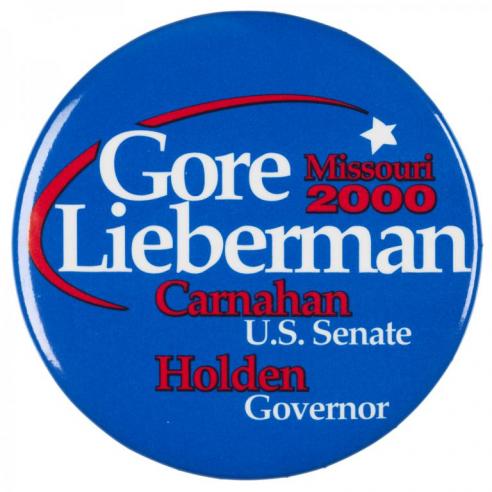 W. Bush) had succeeded in getting a substantial vote from the usual, pro-Democrat Hispanic, black, and female voters. As a result, he received early support for a presidential bid. Positioning himself as a “compassionate conservative,” Bush received the majority of the primary delegates to defeat Sen. John McCain for the Republican nomination.
W. Bush) had succeeded in getting a substantial vote from the usual, pro-Democrat Hispanic, black, and female voters. As a result, he received early support for a presidential bid. Positioning himself as a “compassionate conservative,” Bush received the majority of the primary delegates to defeat Sen. John McCain for the Republican nomination.
The themes of the Bush campaign centered on education, tax cuts, and social security reforms. Promising to be a “uniter, not a divider,” Bush often responded in Spanish to Latino audiences and appealed to female voters. The Gore campaign tried to distance itself from former president Clinton and the scandals of his administration, even though Gore had been the vice president. Instead, the campaign emphasized the good economy and attacked the Bush agenda for tax cuts to the wealthy and plans that might undermine social security. The selection of Joe Lieberman for vice president marked the first time a Jewish candidate was on the national ticket. As the campaigns came to a close, polls indicated that the race was extremely tight. As initial results suggested that Bush had won, Gore 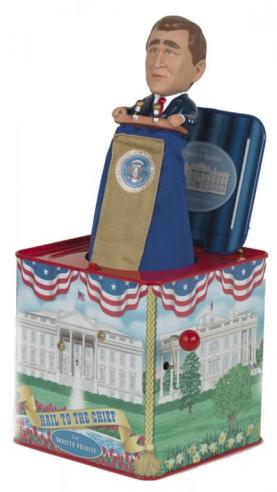 conceded. However, Gore retracted the concession when the final vote in Florida was so close that an automatic recount was required. Some voters complained that the “punch hole” ballots were confusing and may have caused inaccuracies in machine counting. The Gore camp demanded a hand recount of the ballots in four heavily Democratic Florida counties. Both parties submitted a series of lawsuits to start or stop the recount process. The Florida Supreme Court ordered the recount to continue. Television viewers watched as election officials held ballots up to the light to determine if the paper (“the chad”) for a particular candidate had been at least partially punched. Finally, the U.S. Supreme Court ordered the counting to cease on the grounds that there was no standard for judging the votes.
conceded. However, Gore retracted the concession when the final vote in Florida was so close that an automatic recount was required. Some voters complained that the “punch hole” ballots were confusing and may have caused inaccuracies in machine counting. The Gore camp demanded a hand recount of the ballots in four heavily Democratic Florida counties. Both parties submitted a series of lawsuits to start or stop the recount process. The Florida Supreme Court ordered the recount to continue. Television viewers watched as election officials held ballots up to the light to determine if the paper (“the chad”) for a particular candidate had been at least partially punched. Finally, the U.S. Supreme Court ordered the counting to cease on the grounds that there was no standard for judging the votes.
By winning Florida, George W. Bush won the national election with 271 electoral votes to 267 for Gore. For only the fourth time in U.S. history, the electoral winner lost the popular vote (Gore received 540,000 more total votes than Bush). Bush became the second son of a president to reach the highest office (John Quincy Adams was the first in 1824). Virginia cast its 13 electoral votes for George W. Bush.
Election of 2004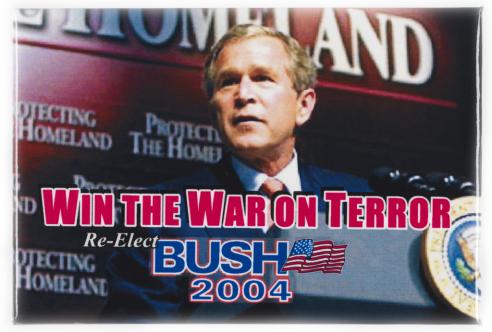
On September 11, 2001, Islamic extremists flew hijacked airplanes into the World Trade Center in New York City and the Pentagon in Washington, D.C., killing nearly 3,000 people. President George W. Bush responded by attacking al-Qaeda terrorist training camps in Afghanistan. At the time, intelligence reports appeared to indicate that Iraq President Saddam Hussein was supporting the terrorists and hiding weapons of mass destruction (WMDs) that could be used against the United States. When Iraq failed to cooperate with United Nations weapons inspectors, President Bush led a coalition of countries in defeating the Hussein regime. In due course, no WMDs were found. As the 2004 election approached, fighting between Iraqi Muslim sects and continued American casualties made the war increasingly unpopular. Even so, with the theme of defending America against terrorism, George Bush secured the Republican nomination for a second term. Several candidates vied for the Democratic nomination. Early leader Howard Dean became the first candidate to use the Internet to solicit campaign funds. Soon, other candidates were also using the Internet and weblogs (blogs) to distribute online political information. Promising to “make America stronger at home and more respected in the world,” Senator John Kerry of Massachusetts won the key primary races to secure the Democratic nomination.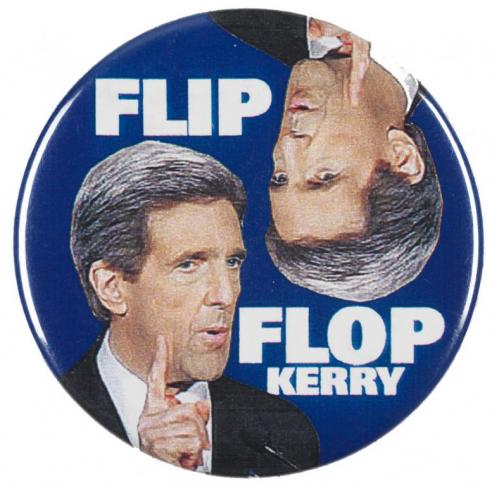
The two presidential candidates differed on many issues, including tax cuts, same sex marriage, abortion, oil drilling, and immigration. The key issue of the election was the war on terror and the invasion of Iraq. Kerry criticized the president’s handling of the war. George Bush claimed that he would make America safer and noted that John Kerry had initially voted for the war and then later was against funding it. Bush accused Kerry of “flip flopping” on important issues and being soft on terror. Campaign reform acts of 2002 limited sending money directly to candidates but did allow special interest groups to finance advertisements on specific issues. Television ads and blogs by a group called Swift Boat Veterans for Truth accused Kerry of misrepresenting his war record. Liberal groups such as MoveOn.org sponsored advertisements opposing the war. In a close election, George W. Bush defeated John Kerry with 286 electoral votes to 251 (one elector voted for John Edwards for both president and vice president). Bush received 51 percent of the popular vote. Virginia cast its 13 electoral votes for George W. Bush.
Election of 2008
Because of low approval rating for President George W. Bush and an unpopular war in Iraq, Democrats saw an opportunity to recapture the White House in 2008. In an intense battle for a nomination that could result in the first black or first female president, junior Illinois senator Barack Obama vied with Senator Hillary R. Clinton, wife of former president Bill Clinton. Senator Clinton was the early favorite. She attacked Obama’s lack of experience and prior, personal associations. Obama positioned himself as an agent for change from previous 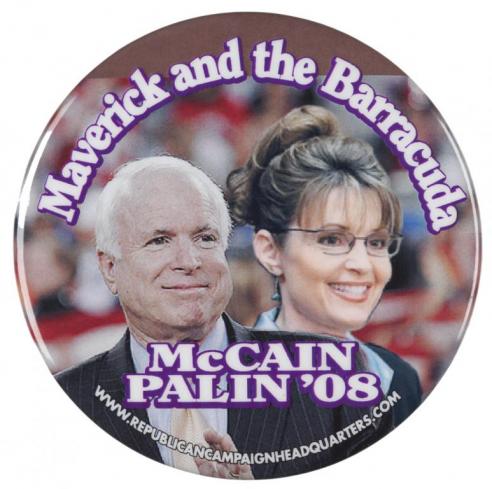 administrations, including the Clinton years. A superior campaign organization, successful Internet fundraising, and endorsements by well-known personalities (such as television host Oprah Winfrey) helped Obama secure the majority of delegates for the Democratic nomination. Republicans nominated John McCain, an Arizona senator with extensive military and public service. Distancing himself from the unpopular Bush administration, McCain identified himself as his own man, a “maverick” who often disagreed with his own party. He hoped to attract votes from independents, as well as conservatives, and attacked Obama as being too liberal and inexperienced.
administrations, including the Clinton years. A superior campaign organization, successful Internet fundraising, and endorsements by well-known personalities (such as television host Oprah Winfrey) helped Obama secure the majority of delegates for the Democratic nomination. Republicans nominated John McCain, an Arizona senator with extensive military and public service. Distancing himself from the unpopular Bush administration, McCain identified himself as his own man, a “maverick” who often disagreed with his own party. He hoped to attract votes from independents, as well as conservatives, and attacked Obama as being too liberal and inexperienced.
During the campaign, Obama attacked the policies of the prior Republican Bush administration and attempted to link McCain with Bush. Obama promised to reduce troop presence in Iraq, reform health care, and increase taxes on the wealthy. Although McCain emphasized his experience, he was the oldest first-time presidential nominee. To bring change and youth to his own campaign, McCain selected Alaska governor Sarah Palin for his running mate. Though initially popular with Republicans, she was soon attacked by the press for failing to demonstrate knowledge of the issues.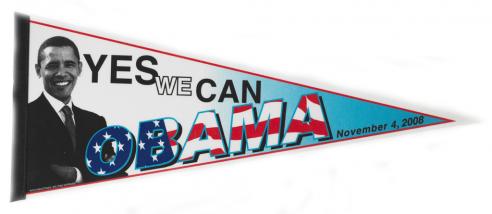
Two months before the election, the bankruptcy of a major financial institution initiated a severe crisis that threatened the country’s economy. This development strengthened Obama’s call for change in the government’s handling of the economy. Public opinion following the candidates’ debate on the subject favored Obama. A record number of people went to the polls for the 2008 election. Obama captured both the electoral vote (365 to 173) and popular vote (52.9 percent). Statistically, women, the young (ages 18 to 29), black Americans (95 percent), and first-time voters favored Obama. McCain received a higher percentage of the white male and elderly vote. Virginia cast its 13 electoral votes for Barack Obama.
Election of 2012
As the 2012 election cycle began, President Barack Obama’s job approval rating had dipped below 50 percent in part because of dissatisfaction with the economic recovery from the 2008 recession and continued high unemployment. Nevertheless, there was no opposition to his nomination, and the Democratic Party was united behind him and Vice President Joe Biden.
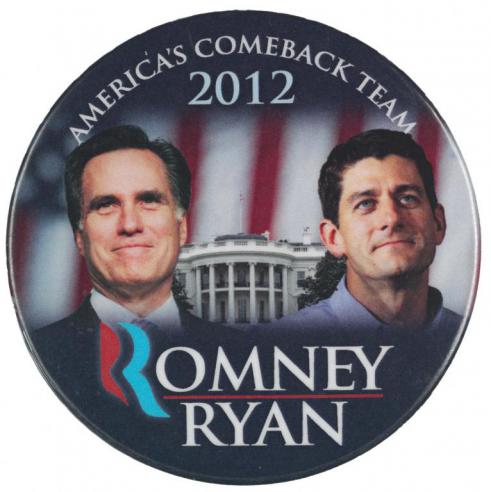 Multiple contenders vied for the Republican nomination. Differing opinions on such topics as social security reform, immigration, and gay marriage resulted in more than twenty primary debates and forums before former Massachusetts governor Mitt Romney was eventually selected. Although some questioned his commitment to a conservative philosophy, Romney was promoted as a successful businessperson who could create jobs. However, occasional harsh rhetoric and intraparty bickering during the primaries provided sound bites that the Democrats could use against the Republican candidate in the general election. Romney was attacked as being too wealthy to be in touch with the ordinary citizen and as a “vulture capitalist” who had looted companies during his business career. Conservative Congressman Paul Ryan was selected for Vice President.
Multiple contenders vied for the Republican nomination. Differing opinions on such topics as social security reform, immigration, and gay marriage resulted in more than twenty primary debates and forums before former Massachusetts governor Mitt Romney was eventually selected. Although some questioned his commitment to a conservative philosophy, Romney was promoted as a successful businessperson who could create jobs. However, occasional harsh rhetoric and intraparty bickering during the primaries provided sound bites that the Democrats could use against the Republican candidate in the general election. Romney was attacked as being too wealthy to be in touch with the ordinary citizen and as a “vulture capitalist” who had looted companies during his business career. Conservative Congressman Paul Ryan was selected for Vice President.
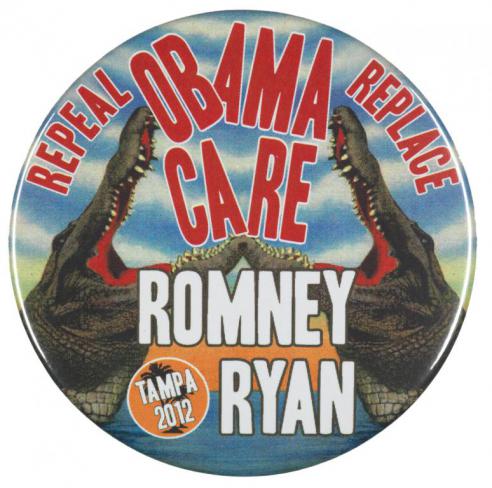 Republicans attacked Obama’s handling of the economy, which was experiencing continued high unemployment and increased government spending and budget deficits. They also attacked the president’s signature first term achievement of the health reform Affordable Care Act (Obamacare) as another example of big government spending. Romney promised to create jobs, work for a balanced budget, cut corporate taxes, and repeal Obamacare.
Republicans attacked Obama’s handling of the economy, which was experiencing continued high unemployment and increased government spending and budget deficits. They also attacked the president’s signature first term achievement of the health reform Affordable Care Act (Obamacare) as another example of big government spending. Romney promised to create jobs, work for a balanced budget, cut corporate taxes, and repeal Obamacare.
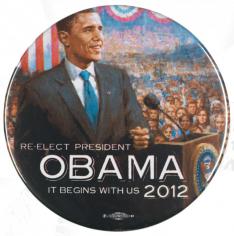 Replacing “change we can believe in,” the Democratic Party’s non-specific campaign slogan for 2012 was “Forward.” Obama supporters emphasized the health care reform, auto industry bailout, death of Osama bin Laden, and steady (although slow) economic progress of the first term. However, the primary strategy was to continue attacking Romney as a wealthy businessperson who would cut programs for the needy while lowering taxes for the wealthy. This charge was enhanced when a secret video surfaced showing Romney at a fund raising event claiming that he would not get the vote of the 47 percent of Americans who depended on government assistance and did not pay taxes, comments that offended many on Medicare and social security.
Replacing “change we can believe in,” the Democratic Party’s non-specific campaign slogan for 2012 was “Forward.” Obama supporters emphasized the health care reform, auto industry bailout, death of Osama bin Laden, and steady (although slow) economic progress of the first term. However, the primary strategy was to continue attacking Romney as a wealthy businessperson who would cut programs for the needy while lowering taxes for the wealthy. This charge was enhanced when a secret video surfaced showing Romney at a fund raising event claiming that he would not get the vote of the 47 percent of Americans who depended on government assistance and did not pay taxes, comments that offended many on Medicare and social security.

As the campaign progressed, Romney moderated some of his positions to include increasing taxes for the very wealthy and keeping parts of Obamacare. The race for the White House tightened when Romney won the first presidential debate. However, just before the election, improvement in the economy as well as Obama’s positive handling of hurricane relief efforts (with praise by New Jersey Republican governor Chris Christie) helped secure his victory.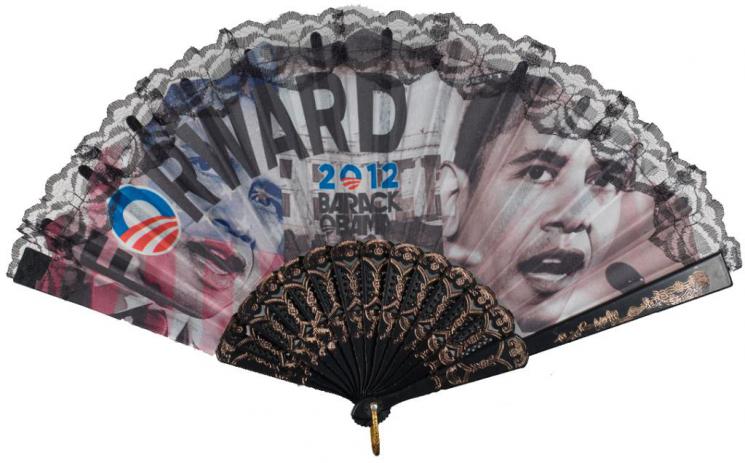
Obama received 52 percent of the popular vote with 332 electoral votes to Romney’s 206. Statistically, black Americans (93 percent), Latinos (71 percent), young voters (60 percent), and women (55 percent) favored Obama. Romney received the majority of the older, white (59 percent) voter.
Election of 2016
Although the Obama administration had achieved economic growth following the 2008 financial crisis, the slow recovery combined with a perceived loss of prestige in foreign affairs and the increasing cost of the Affordable Care Act (Obamacare) gave Republicans hope for success in the 2016 elections.
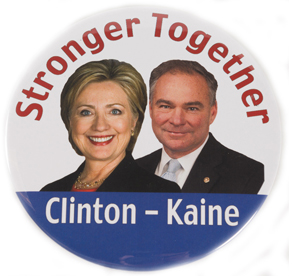 With the possibility of being the first female president, former senator and secretary of state, Hillary Clinton, had the solid support of the Democratic Party. She was initially challenged by Democratic Socialist, Vermont senator Bernie Saunders, whose promises of reducing income inequality, raising the minimum wage, and free public college appealed to young voters and progressives and led to early success in the Democratic primaries. As a result, Clinton also adopted more progressive policies and with the aid of non-committed super delegates she captured the nomination. Senator Tim Kaine was picked as VP candidate.
With the possibility of being the first female president, former senator and secretary of state, Hillary Clinton, had the solid support of the Democratic Party. She was initially challenged by Democratic Socialist, Vermont senator Bernie Saunders, whose promises of reducing income inequality, raising the minimum wage, and free public college appealed to young voters and progressives and led to early success in the Democratic primaries. As a result, Clinton also adopted more progressive policies and with the aid of non-committed super delegates she captured the nomination. Senator Tim Kaine was picked as VP candidate.
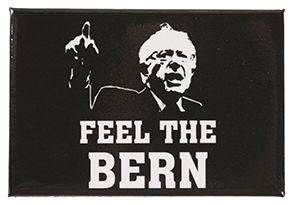 With the possibility of recapturing the White House, seventeen candidates entered the Republican race. But despite the range of political experience among the candidates, it was a political outsider, Donald Trump, a real estate businessperson and reality T.V. personality, that dominated the national news and televised debates. Trumps campaign style was aggressive and unpredictable. Disdaining political correctness, he ridiculed opponents and the media and alienated minority groups by promising to build a wall at the Mexican border and oppose Muslim immigration. With the campaign slogan, “Make America great again,” he promised to improve the economy and bring back jobs. Trump won the delegate vote in the primaries and selected Governor Mike Pence as his running mate.
With the possibility of recapturing the White House, seventeen candidates entered the Republican race. But despite the range of political experience among the candidates, it was a political outsider, Donald Trump, a real estate businessperson and reality T.V. personality, that dominated the national news and televised debates. Trumps campaign style was aggressive and unpredictable. Disdaining political correctness, he ridiculed opponents and the media and alienated minority groups by promising to build a wall at the Mexican border and oppose Muslim immigration. With the campaign slogan, “Make America great again,” he promised to improve the economy and bring back jobs. Trump won the delegate vote in the primaries and selected Governor Mike Pence as his running mate.
Initially, Clinton enjoyed a substantial lead in opinion polls. However, Trump continued to get extensive media coverage and his campaign rallies drew large crowds. Promising to “drain the swamp” and end Washington corruption, his strategy was aimed at middle class and blue-collar workers. The Clinton campaign emphasized her experience while attacking Trump on character.
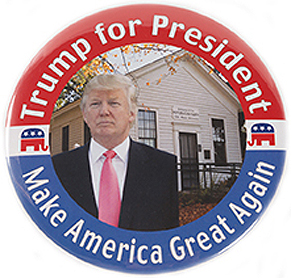
Both campaigns suffered a series of setbacks. Trump supporters were forced to spend time defending their candidate's politically incorrect “tweets” and a video tape with disparaging remarks about women. Clinton was forced to apologize for offending voters by calling Trump supporters a “basket of deplorables.” A month before the election, WikiLeaks, a whistle-blowing media organization, released embarrassing emails by Clintons campaign manager that raised questions of improper ethics by Clinton's Foundation. Security concerns about Clinton's use of a personal e-mail server for government conversations while acting as secretary of state had led to an extensive FBI investigation. Four months before the election, FBI Director James Comey concluded that although Clinton had been careless in handling national security information, there was no criminal intent. However, eleven days before the election, Director Comey reopened the Clinton server case. Finding no additional evidence, the case was again closed two days before election day.
Polls had indicated a Clinton victory, but surprisingly, with an electoral college vote margin of 304 to 232, Donald Trump became the first person to be elected without having previously been either a politician or military leader. (Clinton received 2.8 million more popular votes, which were primarily concentrated in the traditional Democratic states of California and New York.) Although many theories were advanced, it is difficult to explain any specific reason for the unexpected results. Trump's populist appeal to white working-class workers enabled him to win electoral votes especially in the previously Democratic industrial “rust belt” states (Pennsylvania, Michigan, and Wisconsin). Despite a considerable advantage in funds, many felt Clinton ran an uninspired campaign that failed to address voter concerns. Clinton supporters offered several reasons, blaming the FBI investigation, sexism, bigotry (“white backlash”), Wikileaks hacking of the DNC computer, and the possibility of Russian intervention and collusion with the Trump campaign.

